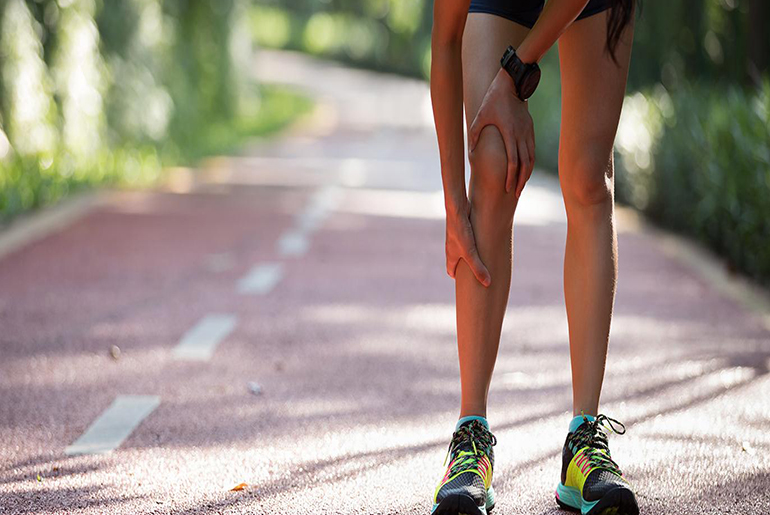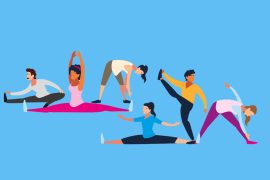While spending more time on the treadmill, logging more miles, and right when you get into a rhythm, you get derailed by an injury. This injury does not take you out completely, but it is a nagging pain that pops up after only a few miles of running. You can’t seem to rest it enough, and eventually, it causes you to change your training schedule or back off the cardio altogether. This pain or injury is none other than shin pain, which is considered one of the most common injuries runners experience. It’s that nagging pain in your lower leg that can be the result of small stress fractures of the shin, extremely tight muscles or overuse and repetitive stress. The causes of this pain can range from increasing the mileage or frequency of your runs too quickly to a weakness in your core or hips. With the help of this article, we will try to figure out some of the preventive measures to avoid shin pain and also some useful shin pain exercises.
If you have shin pain when you run, your first course of action is to avoid running on hard surfaces, reduce the frequency of your runs and your weekly mileage and warm up properly. Beyond those three things, stretching and strengthening the feet, lower legs, hips and core is your next alternative. With the help of this article, we will try to figure out some of the stretches and exercises which will help to reduce and prevent shin splints in the future.
Causes of Shin Pain
- Bone bruise – A bone bruise on the shin results in shin pain such as a blow or impact to the leg. It can result from an injury, such as a fall or playing sports. They tend to appear within 48 hours of an injury and can take up to 6 months to heal. A bone contusion is another name for a bone bruise. A bone bruise occurs when a traumatic injury to a bone causes microfractures. Unlike with a broken bone, an imaging scan or a bone bruise will not show a clear fracture line or change in bone shape.
- Stress fracture – Stress fractures are also one of the causes of shin pain, as it occurs when muscles become tired through overuse, and they are unable to absorb any extra stress. When this happens, the muscle transfers the stress to the bone. This causes tiny cracks, or stress fractures, to form. Statistics suggest that females, athletes, and military recruits are at higher risk. Carrying a heavy load while running can increase the risk, as can having lower bone density. These factors can lead to microcracks in the bone, which need time to heal.
- Using Unsupportive footwear – Using unsupportive footwear is also one of the reasons for shin pain. Always keep in mind to wear branded sports shoes. To perform any physical activity footwear does play a pivotal role to evade any sought of injuries.
Proven Treatments for Shin Pain
To relieve your symptoms, you need to give your bones and muscles time to heal. Shin splints usually improve with a combination of:
- Rest – Take a break from sports, running, and other activities to give your muscles and bones a chance to recover. You may need to rest and take it easy for a few weeks or longer.
- Ice – Apply a cold compress to your shins every 10 to 20 minutes, three to four times a day, for a few days. Ice helps relieve the swelling and pain of shin splints.
- Pain relievers – Over-the-counter nonsteroidal anti-inflammatory drugs (NSAIDs) can ease pain and swelling.
- Supplements – Vitamin D3 supplement (1000 to 2000 IU daily) may help. Discuss supplements with your doctor.
- A slow increase in activity level – When you do become active again, start slowly. Increase your activities gradually to reduce the risk of shin splints returning.
- Supportive shoes and shoe inserts – For people who have flat feet, shoe inserts (orthotics) can be effective at relieving the pain of shin splints. Orthotics support your arches and reduce stress on the muscles and bones in your lower legs.
- Physical therapy – Therapy can be helpful, especially with assistance in returning to running.
How to Prevent Shin Pain
While you may not always be able to prevent shin pain, you can reduce your risk of developing the condition or making it worse. Here are some of the preventive ways to lower the shin pain risks.
- Wear supportive shoes when exercising – Running shoes should be replaced every 300 miles. Consider wearing orthotic inserts that support your arches. Stop in and chat with someone at a running shoe store where they can help match your foot type with a proper running shoe or orthotic.
- Increase your physical activity gradually – Avoid sudden increases in activity. Stick to the 10% rule and don’t increase more than 10% per week in activity.
- Rest between activities – A proper rest allows your muscles and bones time to heal.
- Reduce physical activity during pain – Use pain as your guide. If you are noticing shin pain, reduce your activity level until this improves. Do not try to push through the pain.
Best Shin Pain Exercises
1.) Plyometric Lunges – Plyometric Lunges are one of the best shin pain exercises. Lunge forward with your right foot and left arm until the shin of your back leg is parallel to the floor and your knee almost touches the ground. Push up off the ground in an explosive manner, and switch your legs in midair so you land in a lunge with your left leg forward. Left and right lunges count as one rep. Do three sets of 15 reps.
2.) Straight-leg Calf Raise – Straight-leg Calf Raise is one of the best shin pain exercises. Hold a dumbbell in your right hand; stand on a step. Cross your left foot behind your right ankle. Balance on the ball of your right foot. Lift your right heel and pause; then lower. Do three sets consisting of 15 reps on each side.
3.) Bent-Knee Calf Raise – Bent-Knee Calf Raise is one of the best shin pain exercises. Follow the straight-leg calf raise instructions, but bend the knee of your balancing leg and keep it bent as you raise and lower your body. Do three sets of 15 reps on each side.
4.) Farmer’s Walk on Toes – Farmer’s Walk on Toes is one of the best shin pain exercises. Hold heavy dumbbells at your sides. Rise up on your toes and walk forward for 60 seconds. If you feel that you could’ve gone longer than 60 seconds, increase the weight. Do three sets.
5.) Eccentric Calf Raises – Eccentric Calf Raises are one of the best shin pain exercises. Stand on a step with your heels hanging off the edge. Push yourself up on your toes. Then very slowly (to a count of 10) drop your heels below the level of the step. Do three sets of 15 reps.
Disclaimer:
The information contained in this article is for educational and informational purposes only and is not intended as a health advice. We would ask you to consult a qualified professional or medical expert to gain additional knowledge before you choose to consume any product or perform any exercise.








